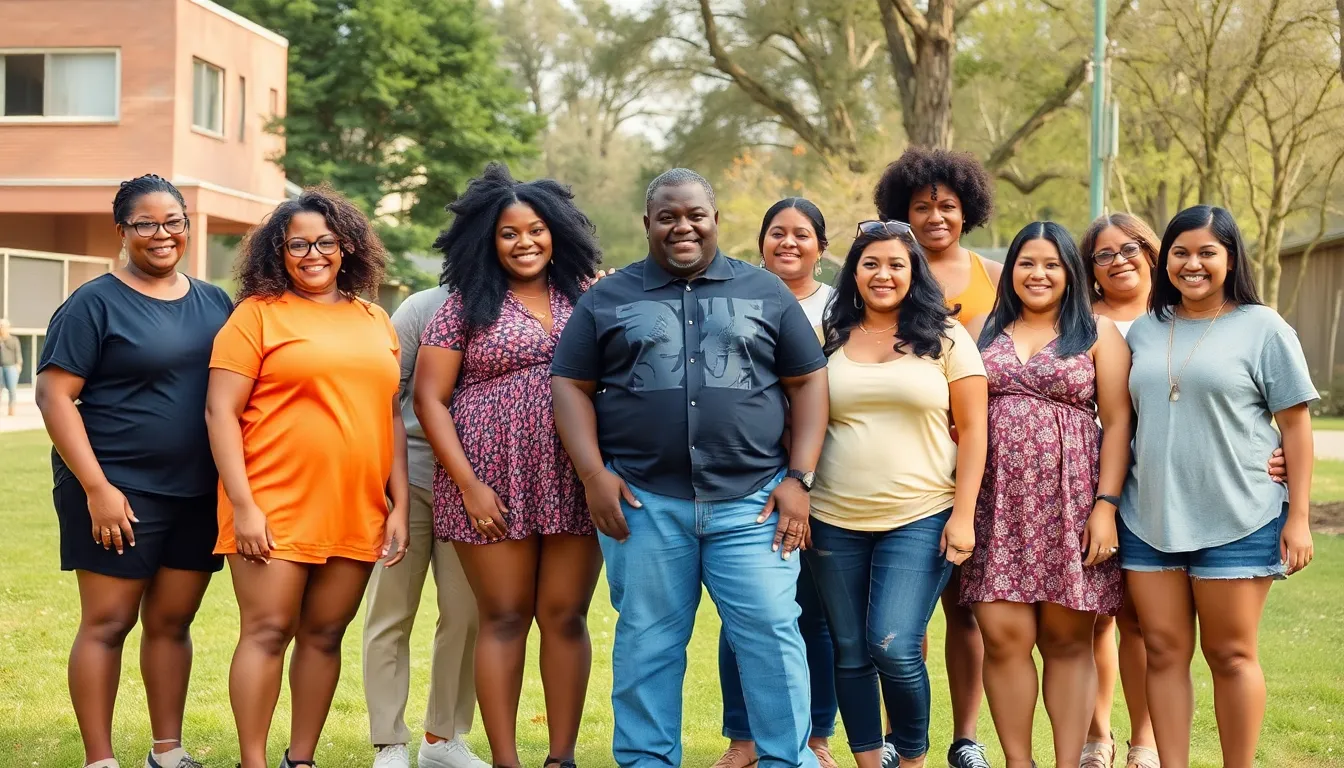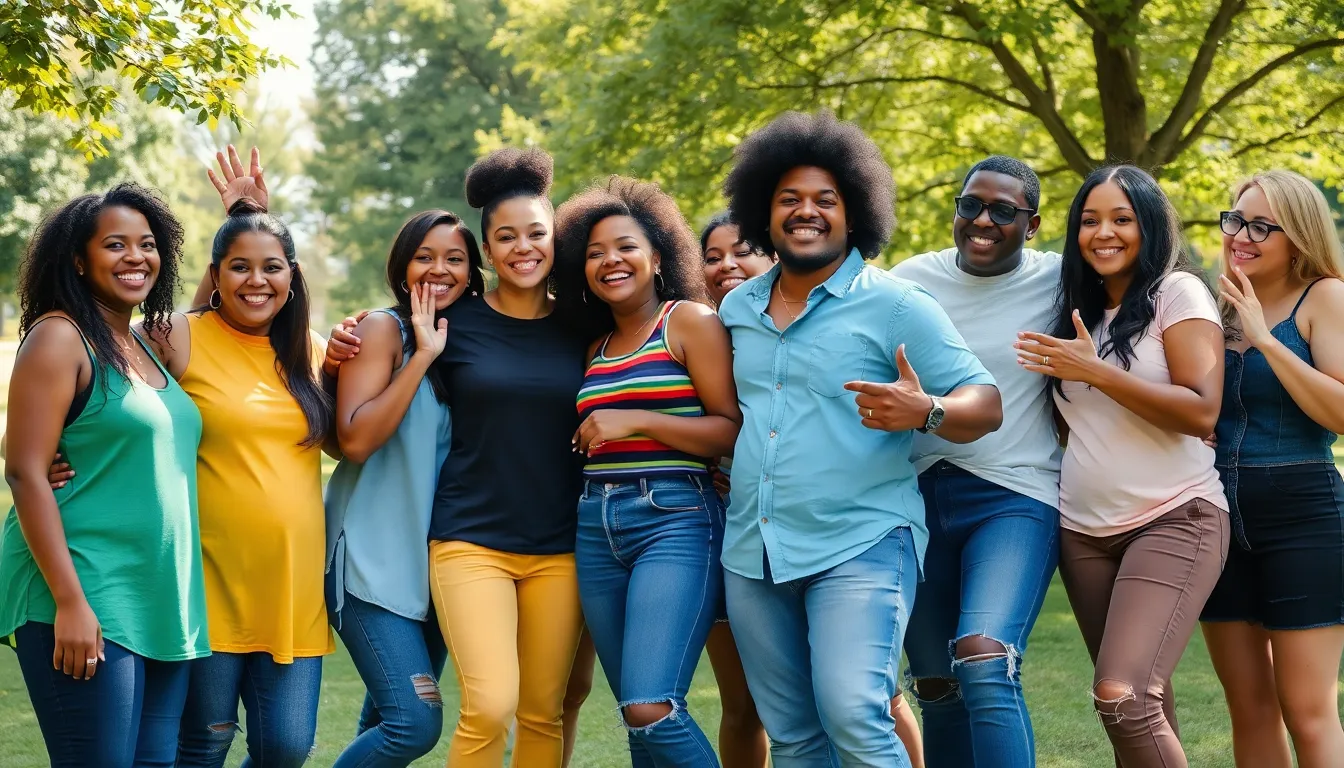In a world increasingly obsessed with unrealistic beauty standards, body positivity has emerged as a powerful movement promoting self-acceptance and love for all body types. It challenges societal norms and encourages individuals to embrace their unique shapes, sizes, and features. This shift in mindset not only fosters confidence but also cultivates a healthier relationship with oneself.
Body positivity isn’t just about aesthetics; it’s a holistic approach to well-being that impacts mental health, self-esteem, and overall happiness. By advocating for inclusivity and diversity, the movement inspires people to celebrate their bodies and reject harmful comparisons. As more voices join the conversation, the message becomes clearer: every body deserves respect and love, paving the way for a more compassionate society.
Table of Contents
ToggleUnderstanding Body Positivity
Body positivity encompasses the acceptance and appreciation of all body types, encouraging individuals to value themselves regardless of societal standards. This movement shifts the focus from appearance to self-love and inclusivity.
The Definition of Body Positivity
Body positivity refers to the belief that all bodies, regardless of size, shape, or appearance, deserve respect and love. It emphasizes self-acceptance and challenges the traditional beauty ideals perpetuated by media and culture. Individuals embracing body positivity reject negative self-talk, fostering healthier relationships with themselves and others.
The History of Body Positivity Movement
The body positivity movement traces its roots to the 1960s, gaining traction through feminist activism emphasizing women’s rights and self-image. In the early 2000s, it evolved into a more inclusive movement, extending beyond gender to embrace various body types, races, and abilities. Influential figures and social media played pivotal roles in spreading body positivity, creating communities that empower individuals to share their journeys and promote self-acceptance. This growth illustrates a collective effort toward dismantling harmful beauty norms and celebrating diversity.
The Importance of Body Positivity

Body positivity plays a vital role in promoting self-acceptance and fostering a healthier perspective on personal appearance. Its influence extends into several key areas, including psychological benefits and social impact.
Psychological Benefits
Body positivity significantly enhances mental health by reducing anxiety and depression related to body image. Individuals who embrace positive body image demonstrate higher self-esteem and self-worth. Studies show that self-acceptance can lead to increased life satisfaction. Embracing diverse body types creates an environment where individuals can express themselves freely, lessening the pressure to conform to societal beauty standards. Improved mental health and emotional resilience often result from this acceptance, allowing individuals to cultivate healthier relationships with themselves and others.
Social Impact
Body positivity fosters inclusivity and diversity across various social settings. It encourages a culture that values individuals for their character and abilities rather than their appearance. Activism and representation in media have increased awareness and support for body diversity, which challenges traditional norms. This inclusive mindset cultivates an environment where individuals feel accepted and valued for who they are. As a result, body positivity strengthens community bonds, inspiring collective efforts to create a more compassionate society.
Body Positivity in Media
Media plays a crucial role in shaping perceptions of body image. The representation of diverse body types in various media forms can challenge traditional beauty standards and promote body positivity.
Representation in Fashion
Representation in fashion includes showcasing models of all sizes, shapes, and abilities. Major brands are increasingly featuring plus-size models, promoting inclusivity in campaigns, runway shows, and advertisements. This shift encourages consumers to embrace their bodies, knowing that fashion is accessible to everyone. Studies show that diverse representation in fashion reduces harmful stereotypes and increases self-esteem among consumers. Furthermore, initiatives, such as the Body Positive Movement within the fashion industry, aim to dismantle narrow beauty ideals and celebrate individuality.
Social Media Influence
Social media significantly influences body positivity by creating platforms for diverse voices. Online communities and influencers promote self-love and acceptance, inspiring individuals to embrace their unique body types. Examples include hashtags like #BodyPositivity and #EffYourBeautyStandards, which foster dialogue around body image. Research indicates that positive social media interactions can enhance mental well-being and reinforce body confidence. However, it’s essential to critically assess social media content, as some portrayals may promote unrealistic standards. Overall, the impact of social media on body positivity presents both opportunities and challenges in fostering an inclusive culture.
Challenges to Body Positivity
Body positivity faces various challenges that hinder its growth and acceptance in society. These challenges stem from societal pressures and prevalent misconceptions that can affect individuals’ self-acceptance and well-being.
Societal Pressures
Societal pressures significantly impact body image and self-esteem. Media representations often prioritize narrow beauty standards, leading to unrealistic expectations. Advertising frequently promotes idealized body types, resulting in feelings of inadequacy among those who don’t fit these molds. Peer comparisons and social media amplify these pressures, causing individuals to measure their worth against curated images and edited portrayals. Consequently, many struggle to embrace their authentic selves, feeling compelled to conform to societal ideals rather than valuing diverse body types.
Misconceptions and Criticism
Misconceptions about body positivity complicate its mission. Critics often perceive the movement as promoting unhealthy lifestyles when it advocates for acceptance rather than endorsing specific behaviors. Body positivity champions health at any size, yet some argue that it dismisses the importance of physical fitness and wellness. These misunderstandings can lead to backlash against the movement, hindering its ability to create a supportive dialogue about body image. Addressing these misconceptions is crucial for fostering an inclusive environment where individuals feel empowered to celebrate their bodies without judgment.
Embracing body positivity is essential for fostering a culture of self-acceptance and inclusivity. It encourages individuals to celebrate their unique bodies while promoting mental well-being and self-esteem. As society continues to challenge harmful beauty standards, the movement’s growth highlights the importance of diverse representation in media and the power of community support.
By prioritizing respect and love for all body types, body positivity creates a more compassionate environment. This shift not only empowers individuals but also inspires collective action toward a world where everyone feels valued for who they are, not just how they look. The journey toward body positivity is ongoing, but each step taken contributes to a more accepting and supportive society.




